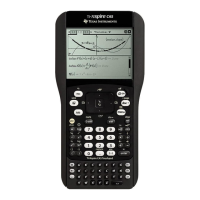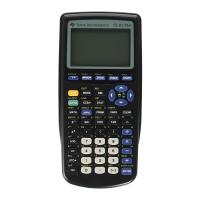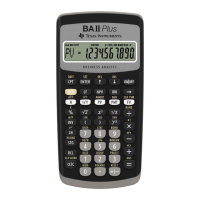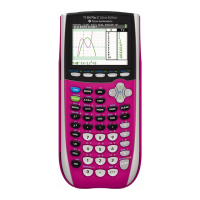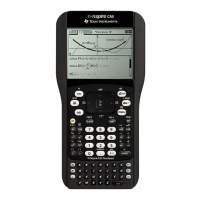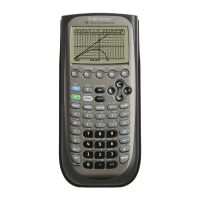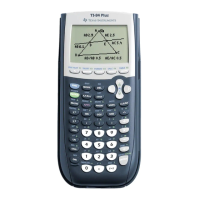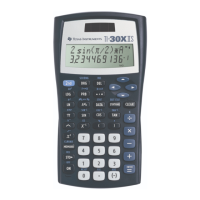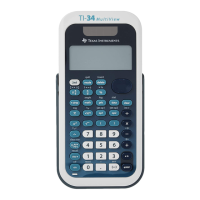TI-89 / TI-92 Plus / Voyage™ 200 PLT Statistics with List Editor App Getting Started 12
Example: Producing a Power Regression
Notice the pattern of the residuals: a group of negative residuals, then a group of positive
residuals, and then another group of negative residuals. The residual pattern indicates a
curvature associated with this data set for which the linear model did not account. The residual
plot emphasizes a downward curvature, so a model that curves down with the data would be
more accurate. Perhaps a function such as square root would fit. Try a power regression to fit a
function of the form y = a ä x
b
.
1. Press 2 a to return to the list editor.
2. Press „ (
Plots) and select 1:Plot Setup to display the
Plot Setup dialog box. Highlight Plot 1 and press † Ÿ to
turn it on. Press D † Ÿ to turn off
Plot 2.
3. Press ‡ (ZoomData). The window variables are adjusted
automatically, and the original scatter plot of time-versus-
length data (
Plot1) is displayed.
4. Press 2 a to return to the list editor.
5. Press † (
Calc) and select 3:Regressions. Then select
9:PowerReg to display the PowerReg input dialog box. X List
and
Y List should be prepopulated with the correct lists
(
list1 and list2) to calculate this power regression. (See
arguments as shown to the right.)
6. Press Í to close the dialog box and calculate the power
regression.
Values for a, b, r
2
, and r are displayed in the PowerReg
output dialog box. The power regression equation is stored
in
Y1. Residuals for the power regression are calculated
and placed in the
resid list. The previous contents of resid
are overwritten by the new data. Residuals associated
with the linear fit of the transformed data are calculated
and placed in the
residt list.
7. Press Í to close the dialog box and return to the list
editor.
Note: If the Results->Editor option in the ƒ (Formats) dialog box
is set to
ON, resid and residt are pasted to the end of the list
editor.
8. Press ¥ s. The regression line and the scatter plot
are displayed.
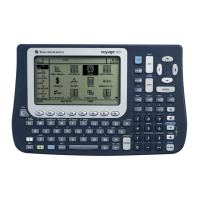
